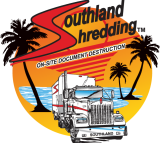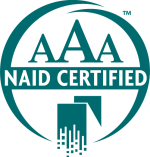Document destruction has become mandatory by law, in order to prevent the misuse of vital information by unscrupulous individuals. There are a number of Federal and State Enactments such as the FACTA (Fair and Accurate Credit Transactions Act) and HIPPA (American Health Insurance Portability and Accountability Act). They mandate the destruction of documents in a proper manner to prevent identity theft. Documents falling under this category include:
- Blank Checks
- Tax Records
- Blank Checks
- Payroll Records
- Medical Records
- Personnel Records
- Bank Statements
- Financial Statements
- Legal Documents
- Mailing Lists
- Office Correspondence
- Photocopies
- Invoices
The list is unending. The best way to destroy documents is by shredding them. When confidential papers are simply thrown into the trashcan, visitors, maintenance staff and other employees can easily access them. This is a grave security risk.
In small businesses or homes where the wastepaper output is limited, this can be taken care of by installing shredding machines for in-house shredding. But, in the case of big businesses and commercial establishments, in-house shredding is a practical impossibility. This is due to the large quantity of paper to be shredded. In such businesses, the services of professional shredding service providers are very useful. Once contracted, these professional companies come at a prescheduled time in special trucks to conduct the shredding onsite. In the case of offsite shredding, they carry it to the company warehouse and documents are destroyed there. In both cases, the shredded material is later sent for recycling.
Recycling includes pulping the shredded material, which is then used to make recycled paper products. The recycling process is comprised of different stages:
- First, the discarded paper is converted into ‘re-suspension’ or pulp slurry in clean water, to separate the component fibers.
- The slurry is then treated chemically to remove non-fibrous contaminants and is also given a detergent washing.
- In the case of white paper, there is a bleach treatment involved.
- The fresh recycled paper is made with a mixture of the pulp and some amount of virgin fiber.
- In the process, some amount of unusable material referred to as ‘sludge’ is left behind. This is mainly weak fiber and old ink and is either used by farmers as fertilizer, buried in a landfill or burned in paper mill furnaces to generate energy.
The usable pulp mixture is diluted with additional fresh water, to make a very thin pulp or slurry, which is fed into a paper machine. There, it is drained though a fine mesh screen and compressed to remove excess water. This material is then passed through large drums that are steam heated, to form paper sheets.
For an effective recycling program, employees of any company consuming large amounts of paper should first be educated about the available waste paper recycling methods. Then, through interactive sessions, they need to be informed about the benefits of recycling and the ways in which they can positively contribute to the program. This can be as simple as monitoring the usage of paper and segregating white paper from colored paper. They can be stored in separately labeled trashcans.
Every time waste paper is recycled, there is conservation of valuable energy, resource conservation and reduction in waste disposal costs.




